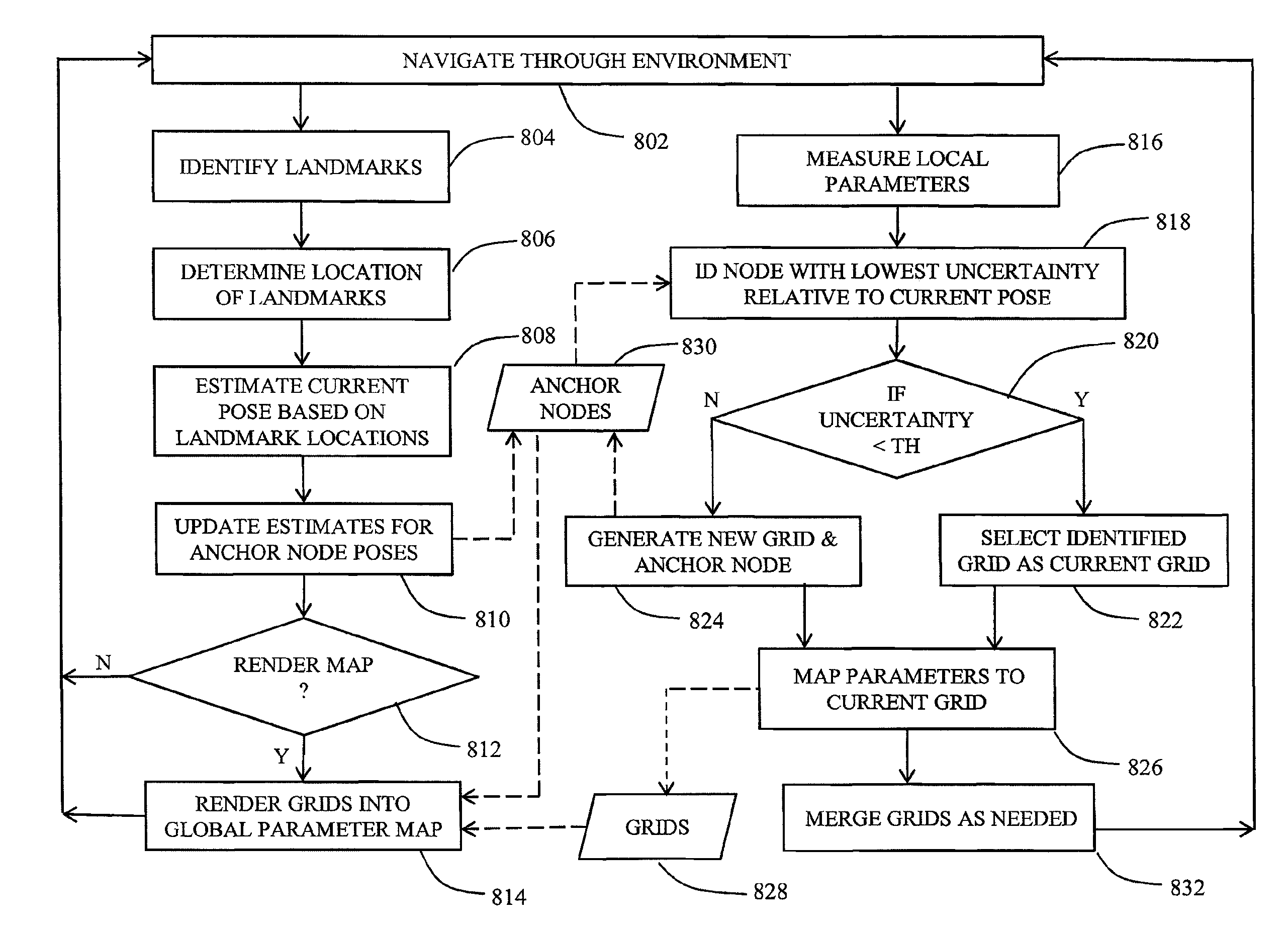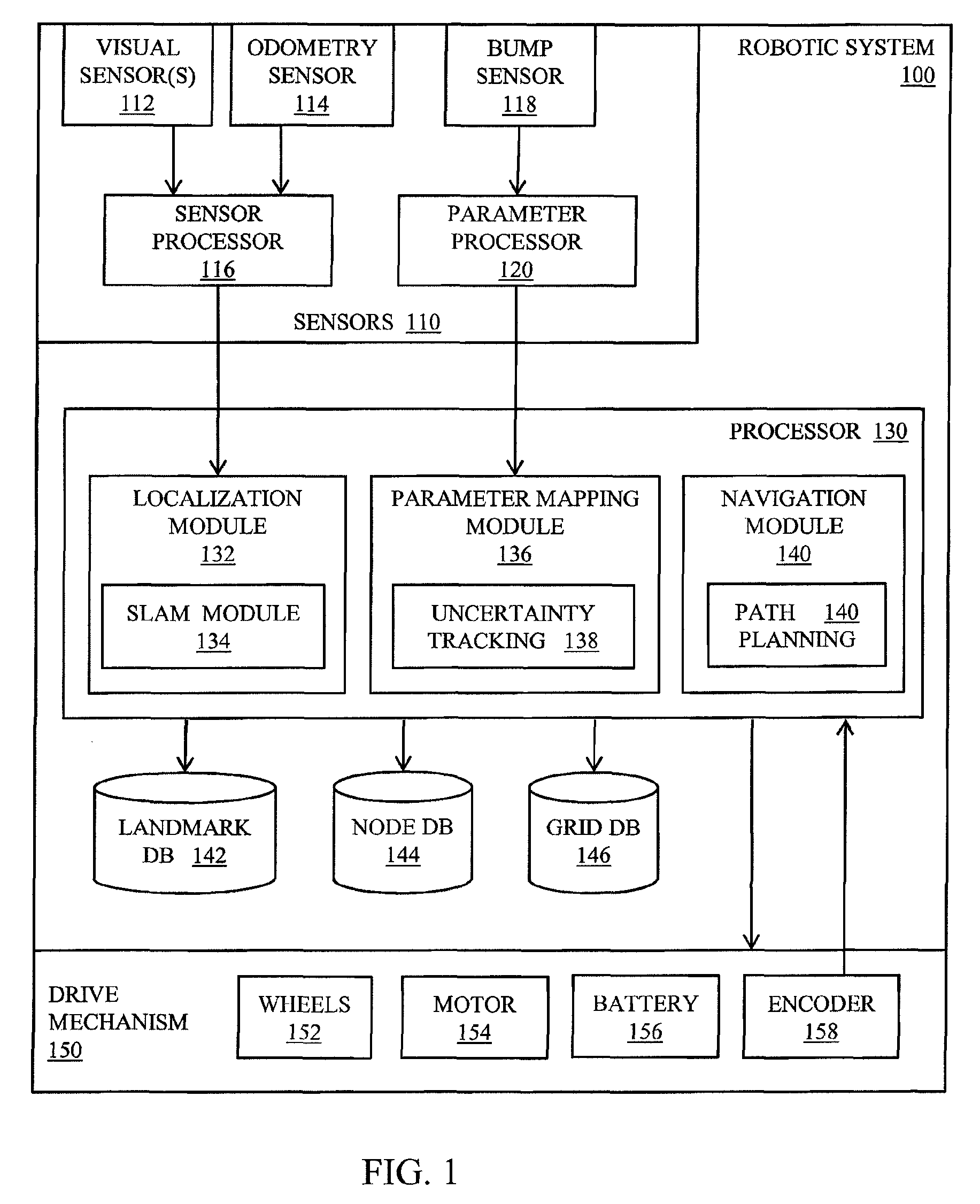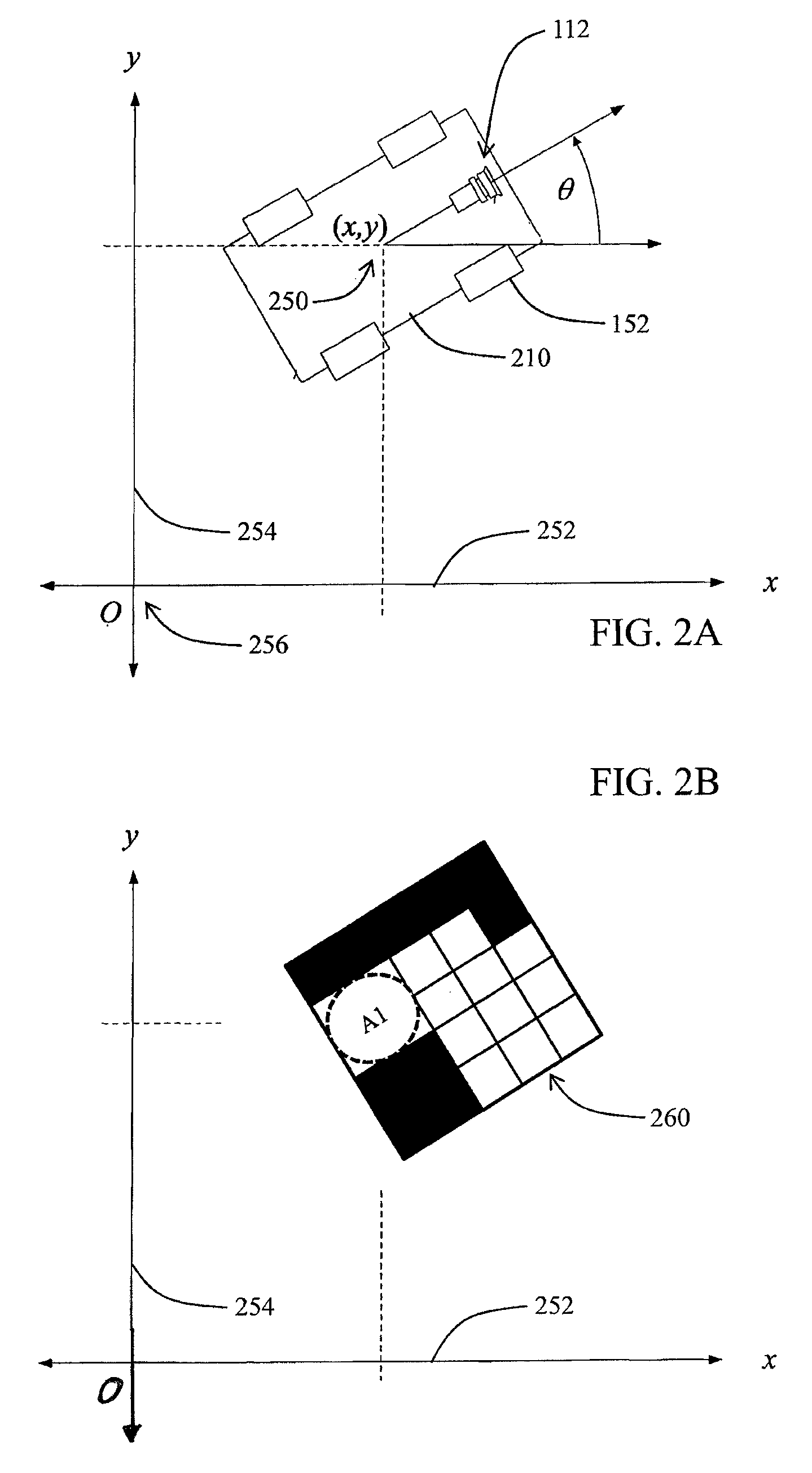Adaptive mapping with spatial summaries of sensor data
a sensor data and spatial summary technology, applied in the field of technology, can solve problems such as linear growth of storage requirements
- Summary
- Abstract
- Description
- Claims
- Application Information
AI Technical Summary
Benefits of technology
Problems solved by technology
Method used
Image
Examples
Embodiment Construction
[0024]Illustrated in FIG. 1 is a functional block diagram of a mobile robotic system configured to generate spatial summaries as described in more detail below. The robotic system 100 includes one or more sensors 110, a central processing unit 130, one or more databases for storing relevant data, and a drive mechanism 150 including drive wheels 152, for example. The one or more sensors 110 include one or more visual sensors 112, i.e., cameras, video cameras, imagers including CCD imagers, CMOS imagers, and infrared imagers, for example, for acquiring images of the environment in which the robot is roving. The set of sensors in the preferred embodiment also includes one or more wheel odometers 158 for measuring the rotation of the wheels of the drive system. The set of sensors may further include one or more bump sensors 118 for generating a signal indicating the presence of an obstacle in the path of the mobile robot.
[0025]Data from the sensors 112, 114 may undergo preprocessing at ...
PUM
 Login to View More
Login to View More Abstract
Description
Claims
Application Information
 Login to View More
Login to View More - R&D
- Intellectual Property
- Life Sciences
- Materials
- Tech Scout
- Unparalleled Data Quality
- Higher Quality Content
- 60% Fewer Hallucinations
Browse by: Latest US Patents, China's latest patents, Technical Efficacy Thesaurus, Application Domain, Technology Topic, Popular Technical Reports.
© 2025 PatSnap. All rights reserved.Legal|Privacy policy|Modern Slavery Act Transparency Statement|Sitemap|About US| Contact US: help@patsnap.com



